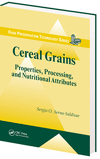Benefits of Oatmeal
An oatmeal breakfast enhances feelings of fullness and helps curb hunger to a significantly greater extent than a leading oat-based ready-to-eat cereal.

Candida Rebello, RD, MS, of the Pennington Biomedical Research Center at Louisiana State University in Baton Rouge, La., presented research on the impact of eating oatmeal versus a RTEC of equal calories. The statistically significant results show that oatmeal enhances satiety, feelings of fullness and reduces the desire to eat more than RTEC. Rebello also reported laboratory results suggesting that the processing of RTEC may cause changes in oat fiber that potentially reduces its ability to enhance satiety.
“Our research builds on previous studies that show oatmeal can help extend feelings of fullness and suppress the desire to eat for several hours,” said Rebello. “Oats and oatmeal may play a role in helping consumers overcome environmental cues that stimulate hunger.”
Some 47 healthy men and women completed the randomized, controlled crossover investigation. Following an overnight fast, subjects completed two breakfast trials in random order at least a week apart. Each breakfast consisted of either 250 calories of instant oatmeal or 250 calories of a RTEC served with 113 calories of lactose-free skim milk. After eating breakfast, subjects’ satiety measures were assessed at 30, 60, 120, 180 and 240 minutes. After four hours, subjects were given lunch and were told that they could eat as much or as little as they wanted.
The results showed that when subjects ate oatmeal, they reported increases in overall fullness, as well as stomach fullness, and reductions in hunger and the desire to eat. At lunch, the subjects who had oatmeal consumed significantly less calories (about 85 fewer calories). In addition, when subjects ate oatmeal for breakfast, they chose low-fat options at lunch, suggesting that enhanced fullness may actually help control the desire for foods that are higher in calories and fat.
From an analysis of the types of fiber in each cereal, the researchers also reported that the beta-glucan oat fiber in the oatmeal had a higher molecular weight and viscosity than the beta-glucan in the RTEC. The difference in oat beta-glucan in oatmeal versus cereal is thought to be the reason why oatmeal was more satisfying than the RTEC.
“The oatmeal beta-glucan is superior at affecting appetite, possibly by delaying gastric emptying or through other actions in the intestinal tract,” said lead author of the study, Frank Greenway, MD, also from the Pennington Biomedical Research Center. “This suggests that eating oatmeal at breakfast may help us better control our calorie intake.”
“We are encouraged by this research because it shows that an oatmeal breakfast can be an effective strategy to help people feel full during that typically challenging time frame between breakfast and lunch,” says Marianne O’Shea, PhD, PepsiCo R&D Nutrition. “With the Quaker Oats Center of Excellence, we aim to build upon established oat science to explore new benefits that will help consumers. It’s clear there is more to discover when it comes to the true potential of the oat and all it can do.”
The trial was funded by the Quaker Oats Center of Excellence, PepsiCo R&D Nutrition.
Looking for a reprint of this article?
From high-res PDFs to custom plaques, order your copy today!





